In rehearsals with the Stones (l to r): Mick Jagger, Johnny Starbuck, Charlie Watts, Keith Richards, Darryl Jones.
Johnny Starbuck:
Recollections of a 30-year Stones’ Roadie
By Jim Palombo and Johnny Starbuck
So I’m sitting in Hank’s Restaurant in San Miguel de Allende, Mexico. The small town was originally known as a colony for artists of various kinds but in contemporary days it’s more a popular destination for both foreign tourists and Mexican travelers. Hank’s happens to be the most frequented place in town, both as an established eatery and watering hole. Because the owner and I have been good friends for some time, it’s been a great place to hang out.
There are a number of interesting people who live in San Miguel; one way or another most make their way into Hank’s. And as is the custom in many Mexican locales, it’s not uncommon for introductions to be made and conversations to develop. So it went with Johnny Starbuck and me. In fact it only took us an afternoon over a few tequilas to realize that we not only share similarities in age and outlook, but we also had experiences that seemed to tweak each other’s interests. As I am a writer and Johnny had some great material floating in his head that just happens to be connected to one of the most famous (if not the most famous) rock ‘n’ roll bands, well, we thought a collaboration of sorts was definitely in order.
What follows, then, is an account of what we’ve come up with. We did struggle a bit in regards to how we wanted to proceed. There was some confusion over whether to write it in the first or third person formats – settling on a mix of both, as it simply seemed to come out better this way. We also struggled with the content, particularly pertaining to the volume of stories, anecdotes and other stuff on the table. In this sense, we decided to pick out a few of the things that seemed to stick in Johnny’s mind the most. There was also some question as to the goal or purpose of the piece. It seemed that as a couple of old-timers, a lot of story-telling can come across as more like bragging or pretense than not. And although a bit of this element is hard to avoid in re-telling one’s story, that is not how we wanted the collaboration to be perceived. I
n a similar vein, we also worried there might not really be a public benefit or good to what is said – in short, what is the point of writing about one’s experiences just to write it, without more of a purpose in mind. In fact, this thought almost caused us to dismiss the whole idea. But because we both enjoyed the telling of and listening to the “roadie tales,” we figured what’s wrong with thinking that others might not appreciate the piece in the same way. So here’s a bit of easy reading we trust you’ll find interesting, including a few rather unique insights into the music business. Perhaps it will prompt recollection about a time never to come again. We hope you enjoy the read − after all, it’s only rock n’ roll.
— J.P.
The first thing Johnny recalls in terms of his “roadie career” happened in 1956, as he was listening to Elvis Presley’s 45 rpm recording of “Hound Dog”. He was just a boy, but the sound and the song set him off immediately thinking that he was somehow destined to be part of the then exploding rock-‘n’-roll scene. But he insists that it wasn’t being a musician that had him hooked. He really didn’t have the interest in playing any particular instrument and the thought of standing in front of groups of people, even though some would be young women just dying to meet him, frightened him more than he likes to admit. So he figured there had to be another way in the door.
And like so many young people in those days, individuals in search of an identity outside of what could be considered a normal work routine, Johnny began to hang out at music venues, doing any kind of stagehand work he could find, work that would give him the chance to get into the mix of the music happening up and down Los Angeles’s Sunset strip.
In terms of the identity point, Johnny became Johnny by virtue of not liking the inner conventions tied to his given name. So he began to refer to himself by only Johnny, a name that he decided was simple to remember and that better fit his idea of the free-spirited person he was becoming. He later added Starbuck from a street name he noticed while hitchhiking in Orange County. Then, feeling he had it right, he legally changed his name in the following year. So it was that he formally became Johnny Starbuck – a name he knew was a great match for his lifestyle.
At the beginning, the “hanging-out” scene was just that. A bit surprisingly in those days, there really weren’t that many young people at the clubs willing to do “whatever” to get some role in the music business. He recalls working initially for free entrance to the gigs, for a meal and even a place to stay in the Sunset district, especially as his traveling daily from Fullerton to LA was becoming a real grind. As the need grew for the better club bands to have some help with their equipment and staging, he was able to find gigs that actually paid − not much, but enough to help him contribute his share of the rent with several other roadies working the scene.
He is fond of saying his willingness to work hard at loading and unloading, while recognizing that without playing an instrument he was becoming an instrumental part of the process, provided an inspiration that surprised even him. It was one of those circumstances that some are fortunate to have happen – as if he was finding a niche in the business at the same time it was finding him.
As he says, “In those days, around 1969 in LA, I knew that bands would show up at a club around 3 or 4 in the afternoon to unload their equipment and get set up on stage. I would volunteer to help them and they would usually welcome the extra hand, especially as I was doing it for only admission and maybe a drink or two. It was no doubt work, and between jobs I would find myself doing whatever I could to make a few bucks, even a couple of things that skirted the law. I even found myself sleeping on other people’s couches or on their floor and even on a few occasions on a park bench.
“But in a strange way I was determined to make it all happen, to live the life I kept feeling I wanted to live. I guess I just couldn’t go back to live the life my parents had in mind, college, job, shirt and tie career with the wife and two kids and the house with the white picket fence. I mean, don’t get me wrong, there is nothing bad about that life, I just wasn’t made to live it.
“So eventually I got sort of a reputation as someone who would work and could also party – a combination that seemed mandatory for an ‘accepted’ roadie – and there came enough steady work and pay to establish some sort of living situation. I had a few years like that but got lucky with it as each band I worked for seemed to be more popular than the last. And when I ended up actually getting paid pretty well for the work – I think I was making a few hundred a week around LA at the time – I was what you would call a happy camper.”
So it was with perseverance, hard work and a bit of luck (which does indeed seem to be the residue of design) that Johnny was realizing his dream of being a part of the music scene. After about five years of working his way up to the better gigs he reached what he thought was the pinnacle of his career, working for Billy Preston.
“I mean Billy was a really hot keyboard player and he could sing as well and his group was one of those that commanded nights at the best places in town and on tour. And he was also really a terrific guy and when I made a mistake or two he just offered some advice on how to do things better. He was an honest-to-goodness cool cat and working with him was just a great experience. And I think I was making about $500 a week, so I was living the roadie high life, especially as I could afford to hang out at some of the top spots like the Rainbow Bar and Grill on Sunset after the gigs. But I had no idea what was on the horizon with Billy.”
It was in 1976 that Billy Preston was asked to be the keyboard player for the Rolling Stones. This happened when the Stones went on a world tour, and as it started in Frankfurt, Germany, Billy had to fly there to begin the work. But he had no thought to take Johnny with him.
“Billy had a guy named Jay Jensen who was with him who was going to handle his equipment. But Jay got bumped up to be Billy’s road manager before rehearsals began. And when it was discovered that the Stones each had their own personnel to handle only their stuff and that Billy’s equipment was just sitting there unpacked on the stage at rehearsal time, well, he called me. Of course I was on the plane as quick as possible, and that was the beginning of what would become my career with the Rolling Stones.
“I arrived still in a semi-state of shock and because they were performing that night I immediately went to the gig to get the equipment set up. Especially after the travel and the excitement it all seemed like a blur, but fortunately all went without a problem and the opening night was a success. What I remember the most was that several hours afterwards I was walking down the hotel corridor and as I passed an open door I saw Keith Richards sitting at a table by himself in his room. Of course having not met him yet I just continued walking but within a second or two I heard ‘Hey, roadie, come on in and say hello.’ Well I sort of froze but managed to saunter into his room, noticing that a rather large amount of drugs and a bottle of Jack Daniels were his only company. And as he invited me to sit, talk and enjoy I remember saying to myself ‘Don’t blow this man, I think he wants to see who I am so I got to keep up with it all, I mean this is fucking Keith Richards.’ And I did manage to manage it all pretty well (not as well as Keith mind you), and it was that first night that turned him and I into the friends we are now, for what is some 35 years. It’s just a trip to think back on it all. “
There is no doubt that the life he led seems hardly real. Johnny recalls his early days with the Stones, especially when Keith had his home in LA where Johnny also lived. “I mean these were the real rock-‘n’-roll days, with the parties almost every night. And they just weren’t parties but more like complete happenings. Everyone would show up, all kinds of film stars, sports celebrities, prominent people and of course the hangers-on.
“And they just came together, around 2 a.m. almost every night. It was crazy and I have to say that Keith was at his best, or worst, in those days. But it simply couldn’t last forever. And actually in the next decade, when the tours became more like a work-business environment rather than a rock-‘n’-roll scene, the Stones – and especially Mick … most people don’t realize how hard he works to maintain himself – became more interested in the health of the band and its continuing success. But Keith, well Keith will always be Keith.”
When asked about the screw-ups he encountered while on tour, Johnny immediately goes to one night at Madison Square Garden. “It was the Garden, man, and for anybody in the business this is really a big deal. I was in charge at the time of the equipment used for three songs on B – stage for both Ronnie’s and Keith’s guitars and the wireless systems. Well when Ronnie starts playing the intro for “The Last Time” we realized immediately that nothing was coming through his amp – it was like dead quiet – and I knew that his wireless and the transmitter had somehow been disengaged. At the same moment Keith, who is a lot more professional than people realize, went right into “Little Red Rooster” and he and Ronnie just got into it. But Ronnie’s guitar was still not working. However the transition in songs gave me a couple of seconds to grab an extra guitar cord, jump up on stage – I hated doing that knowing how totally unprofessional it looked – and get him hooked into the amp in the old conventional way. And the show went on, and it was fantastic.
“But I knew there was a screw-up and of course so did the band. In fact the miscue had even been noted in the next day’s press clippings. And even though I didn’t know how it happened it was still my responsibility so I was very worried when I had to confront Ronnie and Keith with the blunder. But Keith just smiled and said ‘Jesus man, at the Garden? Well, I guess that won’t happen again now will it?’ I was certainly relieved by his easy-going reaction but believe you me it never did happen again, as I made sure to triple check everything before every show.”
In hearing this story I had to ask Johnny about his actual role with the Stones. In other words, with him noting that he was responsible for the guitars of both Ronnie Wood and Keith Richards, how it was that someone who doesn’t even play the guitar ends up being a guitar tech for those two famous guitarists?
“This is a pretty involved and in part sad story, and it goes back a few years to my relationship with one of the most famous roadies of all time, Chuch Magee. Chuch had become an integral part of the Stones production crew and he was responsible for managing the back stage equipment people as well as for the tuning of the guitars. This work by the way is considered pretty important and is why guys are called guitar techs as opposed to roadies. Anyway, Chuch ‘had meet Ronnie in Detroit when Ronnie and ‘Faces’ were playing at the Grande Ballroom. Chuch was the main band equipment guy there and the two became good friends. When Chuch found himself in England without a next job he called Ronnie and voila, his career with the Stones began.
“In short he became a part of the family, much like I did several years later. In this sense Chuch was not only a close friend but a mentor of sorts, as well. In any event, one night around rehearsal time Chuch mentioned that he was not feeling so well. He hung out a bit, I recall the band was working through ‘Stray Cat Blues’, and then he simply keeled over and within ten minutes he was dead from a heart attack. This was certainly a shocker, especially as Chuch was a really well-liked guy and one of the boys for sure. But as the show must go on, it had to be decided the next day who was going to share in his responsibilities.
“Although I had developed a good sense of how to tune guitars by then – I have what can be called a natural ear and of course the Peterson 490-ST Tuner that I had available was the ultimate piece of tuning – I was surprised that Keith suggested that I take over Chuch’s job as Ronnie Wood’s guitar tech. And there was some debate over this. I remember Mick’s legitimate concern about me not being a guitar player, but Keith was committed to the idea and made it work. So I became the guitar tech for Ronnie Wood for 122 shows. It was shortly following that tour and recognizing that we had over 65 guitars at any one time to work with, that we came up with a plan for me to be only stringing and tuning the guitars for both Ronnie and Keith, a responsibility I thoroughly respected and enjoyed throughout the next 2005- 2007 tour.”
As we continued to talk it was clear that Johnny had found what he truly wanted to do. Yet for someone who really wasn’t tied to the scene I was certainly curious as to what an actual day was like.
“Let me tell me you what I did every day of the last tour in 2005-2007. It’s really a day of pretty hard work. I mean the perks are great, being a part of the scene and all that comes with it, but it’s work. On tour my day pretty much went like this:
“By 10 AM, after breakfast I’d be on the bus going to the gig. Mind you that the enormous caravan, which could include up to 52 semis filled with all the related equipment and tour necessities, has already arrived and things are being set in place. “By 10:30 I arrive, find my truck filled with the band equipment and guitars and locate the best path to the stage while the stage manager gets my 15 to 20 stagehands.
“By 11 at the latest I begin to unload the truck and I have all the cases of equipment and guitars rolled to the stage. Every case has an exact final destination on the stage – drums to the center behind the drum riser – keyboard cases to the stage right behind the keyboard riser – guitar cases are numbered so that they go in order across the stage from left to right so that Keith’s guitars are stage left and Ronnie’s guitars are stage right. There are eight guitar cases with eight to 10 guitars in each case, which are CAREFULLY placed in their proper positions. This process alone takes over an hour.
“By 12:00 every member of the backline crew (the guys who do the equipment preparations) begins to set up his stuff. The drum guy, the keyboard guy, the guitar guys, etc. – every guy has a few hours to do this because we have to have it all ready for a sound check by mid-afternoon. When we are done with this, the opening act(s) have time to set up their gear and to do their sound checks before the doors open for the audience, usually about an hour before the show should start.
“During this time I have a process to change the strings on the guitars as needed. My rule of thumb is if a guitar got played for three or four songs it needs new strings. That may be a bit excessive as most guitar players use a set of strings for months before changing them. But we have an unlimited supply of them sent to us by Ernie Ball’s company and to be sure that strings don’t break during a show I like to have new strings all the time. For instance, Keith has a white Fender Stratocaster that he uses only for the song ‘Miss You’. That song gets played once per show, so I put the guitar into the string-rotation every four shows. Keith also has a black Gibson ES-355 that he plays on three or four songs per show, so I would change the strings every show.
“As it turned out, my string changing process demanded that I do it almost from the time the truck was being unloaded. This included a short break for our sound check, which I would oftentimes participate in by playing chords on Keith’s 5-string Telecaster. And when the opening act would begin their set-ups, I would spend this time changing strings. On an average day I would change strings on 15 to 20 guitars. I had my own rule that when the opening act started the show my string changing had to be over, at which point I went backstage for dinner and a chat with Keith and Ronnie over a beer and a smoke.
“I also had the ‘set-list’ responsibility. Believe it or not the band didn’t decide what songs to play that night until the opening act was on stage. This didn’t mean they weren’t prepared, it’s just that picking the songs at that moment seemed to keep things a bit fresh. So by the time I finished dinner and talking with the guitar players, the road manager had assembled the list of songs and would give me a copy of it, hopefully (not always) before the opening act finished their set. I would then go back to my work station and make dozens of copies to be spread around the stage, for the horn players, background singers, the rest of the band and of course for the sound and light crews. They have their equipment computer programmed for each song so it was imperative that they got the song list as soon as possible.
“Once I had the set list and we all know what songs are being played I know which particular guitars are going to be used. Throughout the day I have to have every guitar ready because I don’t know what the songs will be – and each song demands its own guitar. The song ‘Angie’ might get thrown into the set-list once or twice a month but that $50,000 vintage acoustic Martin has to be ready at all times. “Around 9 p.m. the Stones show would begin. The last 15 to 20 minutes before it starts I take the guitars needed by Keith and Ronnie for the first song and do a final tuning. Then I take them up the stage stairs and set them into their stands. Once the show begins I would watch the first song long enough to know that the guitars are fine and we’re off and running. Then I return to my work station, check the next song up and give the guitars needed their final tuning. When the song is done I exchange the guitars, taking the first song guitars back down to the rack at my station and then I would look at the next song coming up and begin to get those guitars ready. This would go on and on until they’ve played about 22 songs.
“After they’ve played 19 or 20 songs I begin to pack things up. Anything I know I won’t need for the rest of the show gets put away. And as soon as they finished the last song I would rush into the final phase – coiling cables, locking the guitar trunks, closing up my work station and then heading for the truck. As the cases get rolled up to the truck I would be the one that waits there and makes sure the packing happens as it should. The truck would get packed exactly, and I mean exactly, the same way every time. When everything was in the truck I would secure the doors with my padlock and go back to the bus where it was time for a beer and a shower. Once everyone was comfortably aboard the bus we leave for the next city, where the whole thing will start again. Like I mentioned before there is a lot of work involved between the notes.
“I have to add that there is a general public perception that the Stones themselves just mesh, and that after all these years they just show up and play and then take a vacation and then show up again and get it on. But it’s not like that at all, as they really work hard to make their performances the best they can be. I mean I always had the sense that Mick in particular wanted everyone, including the person in the seat furthest from the stage, to have their greatest music experience in coming to the concert. And this theme even found itself into the six weeks of rehearsal the Stones did before each tour. These rehearsals included nine to ten hour days and all the songs, new and old, were given their polish. So when they were on stage, I’m telling you there is nothing like it, even after all the years of being there. It was always amazing and I never got tired of it. And whenever I heard my favorite song, ‘Gimme Shelter’, I would always get goose-bumps just thinking – man, what a gig this is. I mean I had the good fortune of also working with Stevie Nicks and Fleetwood Mac a few times and we all became friends. But the Stones, well, what else can I say?”
I have to say that even in writing up his account I knew that Johnny’s life had worked out pretty well. He and I have thought that more may follow, perhaps a “roadie” documentary of some sort would make for a great next step. That would certainly be interesting fun. In any event, it was some ride for him, and for the Stones the rock seems to continue to roll. Although Johnny is now retired from the scene the glint in his eye returns when asked if he would do it again.
“Hell yes, I wouldn’t change a thing. From the couch to the few hundred a week to the six figures I ended making, the experiences I’ve had in between were just what I was looking for. But like with everything else, things have changed and I’m not sure what the younger roadie life might be like. I can say with some certainty that it will come down to perseverance and willingness to work, just as it was for me. And if you can stick it out, well, who knows, you might get lucky.”
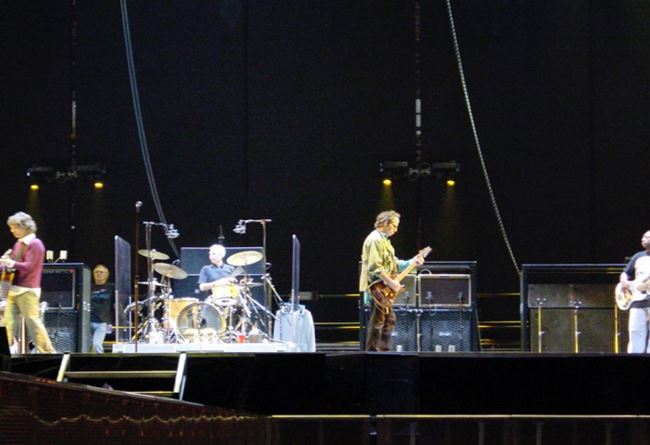
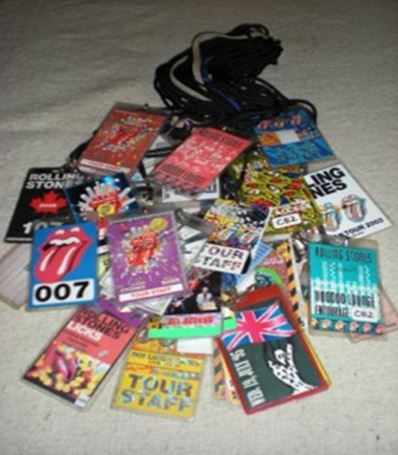
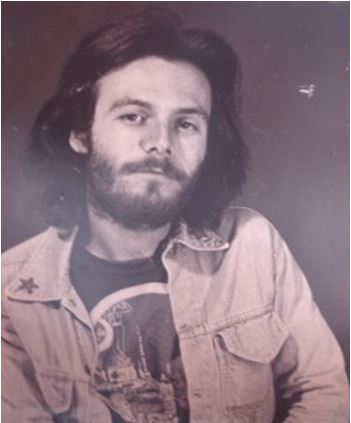
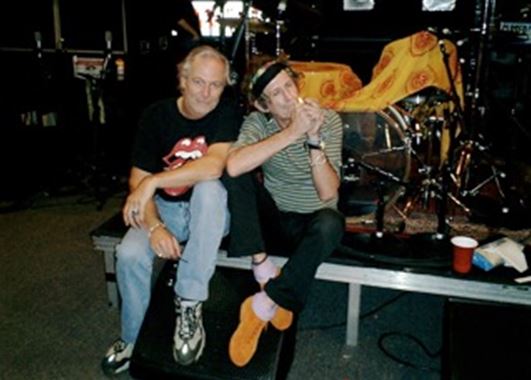
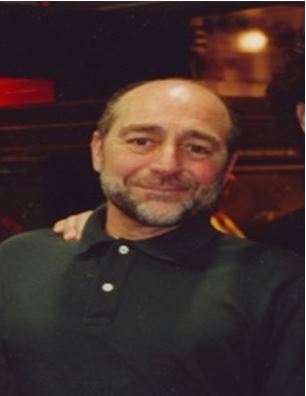
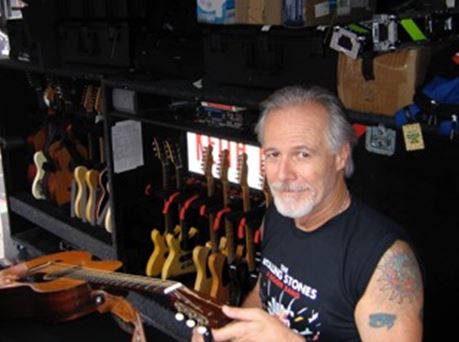
Recent Comments